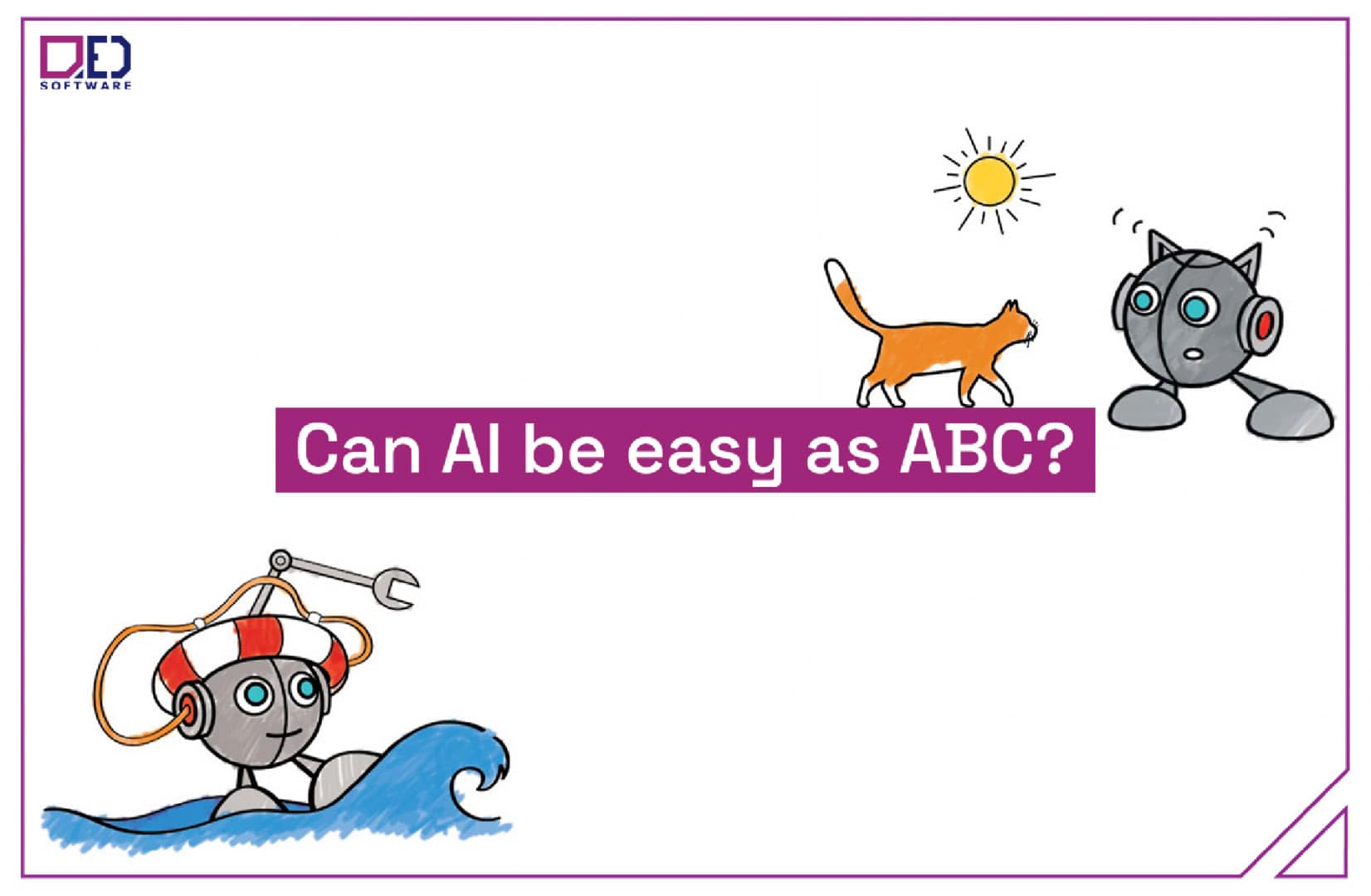Do you remember the infamous question “so what do your parents do at work?”
If someone were to ask your children what their parents do at work, do you know what their answer will be?
The area of artificial intelligence is generally difficult to define for someone who is not “in the industry”. What exactly is machine learning or artificial intelligence or even data science? And how to describe it to a toddler, if explaining it to an adult is a hard nut to crack?
We asked our developers, project managers and data scientists for advice.
How would they explain what they do at work to a five-year-old?
The simplest, yet probably the most straightforward answer came first:
“Computers are smart, but still not as smart as humans. At work I make computers smarter, almost as smart as people.”
And if your kid wanted a short explanation to pass to their peers, it will probably do, but as children grow they expect more detailed answers. And this puts us in front of another challenge.
Even though nowadays children become technically advanced way faster than we would expect them to, understanding the intricacies of data science usually requires knowledge of advanced mathematics. So how to overcome this obstacle? Our specialists who are also parents came to rescue.
“I look at pictures, lots of different pictures!
Just my pictures are taken by airplane pilots flying high in the sky. Sometimes we don’t even see when they take pictures of us.
I also look at the posters made from space. The camera moves high in space and takes pictures of us whenever someone here on Earth asks. These pictures are fascinating – they show the world as birds see it.
They are very beautiful, but because there are so many such pictures that you cannot view them all – unfortunately ????
Nobody is able to view them all, one after another. So we have to figure out a way so that the computer can do it by itself or under our supervision.This way we can go play on the playground and at the same time someone will take a picture of us, from high above and the computer will identify the playground and count how many children are playing there. It will count how many people have come by car or how many are standing in the line for ice cream. And what do I do? I deal with setting up the computer so that it can learn and later view all these fascinating pictures by itself, without my help, so that I can go and play with my children.”
“Machine Learning is a way to solve problems with robots. Robots that have a lot of knobs. We give such a robot a picture (but it can also be a book, music, etc.) of a kitten and then ask it what it sees. If the answer is “a kitten”, then we do nothing – we say “good robot”. But if it answers “a dog” then we correct him and tell him “no, it’s a kitten!”. Then the robot turns its knobs (we don’t change the knobs!) So that when we show the picture of the kitten again, the robot replies correctly. This is how the robot learns. A lot like you! When mom or dad shows you a picture of a kitten, and you answer that it is a dog, they correct you by saying that it is in fact a kitten… Then you say to yourself: “Of course! This pet has whiskers like a kitten and pointed ears like a kitten”. Then, the next time you see a photo of another kitten, you will know that it is a kitten. :)”
When we actually ran those explanations by a 7-year-old (one of our coworkers daughter) to see if she actually understands what we do at work, she asked a very important question “why do you do it?”.
Fortunately we have a very good example here. One of our specialists, while writing his engineering thesis, created a simple video where he showed how AI “finds” people in the water -> https://www.youtube.com/watch?v=rBTSOTc9nDM .
“For example to help rescuers identify people on the water surface. Instead of doing it ourselves a well equipped computer does it for us.
And thanks to AI and ML making such an application is very simple. Just show the computer many times what a person floating on the water looks like and after some time, the computer will be able to do it on its own, often faster and better than we do!
Cars that drive without a driver also work in a similar way and you may have seen them in a movie at some point”
And this became our go to explanation for children – this is how you can use AI and ML. But most importantly, this is why what we do is important. Because it can be used not only for business purposes but also to help people.
So after we all managed to explain to our children what to do at work and what stands behind those complicated acronyms, don’t you have an urge to actually teach them the mechanics?
If you share our passion for sharing AI/ML knowledge with everyone, no matter the age, here are some useful and free tools that will help you introduce what you possibly do at work to your toddler, kid or even a teenager:
- YouTube
This is still the most common place where people learn. Whether it’s how to cook, do makeup or repair a car, YouTube is a go to platform of free knowledge. Watching videos is easy and if you find the right creator they will grab your kids attention in no time. So what should you watch with your child? Last year CrashCourse created a whole playlist with short movies on artificial intelligence and machine learning and they are definitely worth watching.
If you would prefer to have it all in one, there is also a great video in Microsoft’s Explanimators series. - Google
Another great source of information and fun is Experiments with Google. Here youngsters can perform their own simulations and even teach their computer to recognize them while creating machine learning models.
This will probably be more suitable for young teens rather than kids, even adults could find it interesting. - Machine Learning for Kids
This project coordinated by IBM is one of the biggest ones. Through different games, tasks and courses youngsters can learn what Ml is. It is a great free tool to practice Machine Learning and introduce the concept to children. Although this is mostly prepared for group sessions and classroom experience, you could act as a supervisor/mentor and help if needed.
As we believe in spreading the world about AI and ML and are keen on teaching youngsters, we would also suggest sharing this tool with your kids’ teachers. Check it out here.
Remember to tailor the training to your child’s needs. Some of our propositions could be fun to watch with a few-year-old but some need a bit more background knowledge.
Either way this could be a way to spend time with children around you doing what you already love and sharing it with the new generation.
Happy International Children’s Day!

